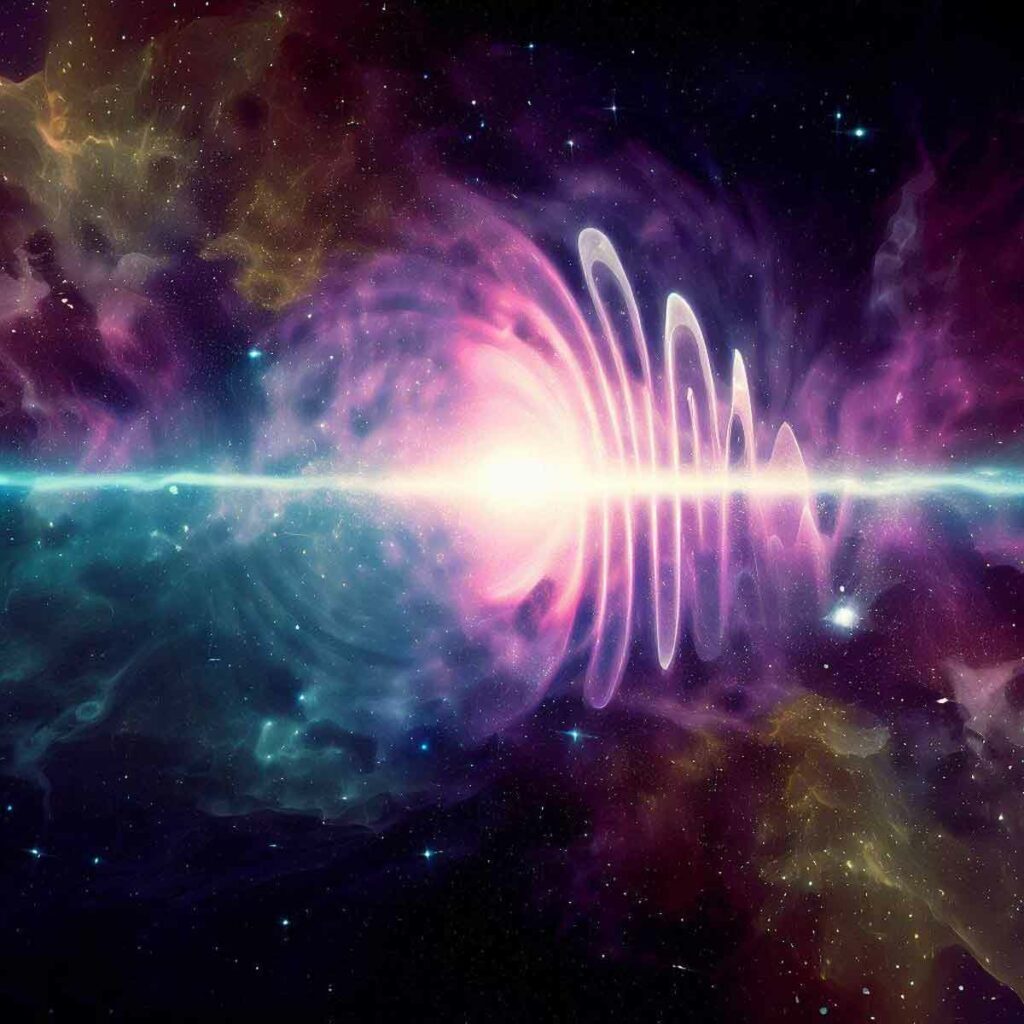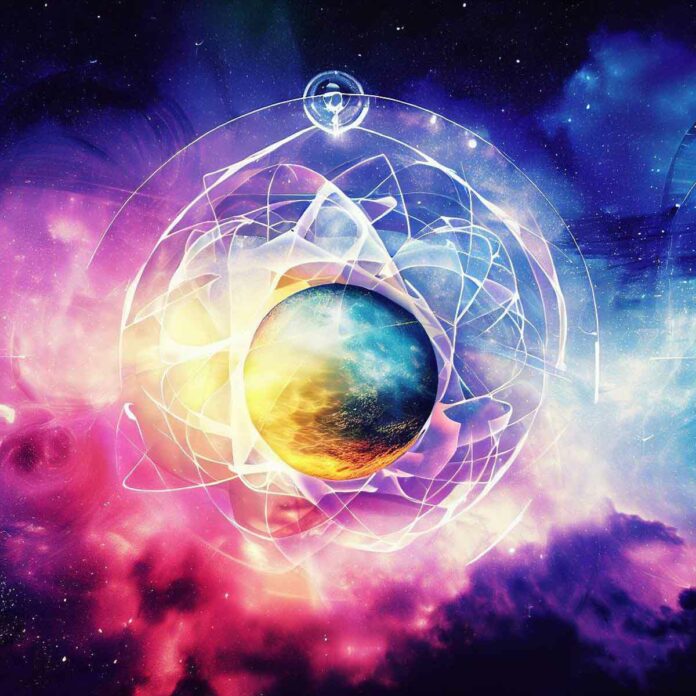In a fascinating endeavor, NASA has embarked on a project that transforms astronomical data into melodious compositions.
This innovative technique, known as “sonification,” takes the vast amount of digital information collected by NASA’s space telescopes and converts it into musical notes and sounds.
By assigning different wavelengths of light detected by telescopes such as the Chandra X-ray Observatory, James Webb Space Telescope, Hubble Space Telescope, and Spitzer Space Telescope to specific musical layers, the resulting sonifications offer a unique auditory experience of the cosmos.
R Aquarii: A Celestial Symphony
One captivating example of this sonification technique is showcased through the system called R Aquarii.
This binary star system consists of a white dwarf and a red giant in mutual orbit.
The visual image composite, featuring data from the Hubble Space Telescope in red and blue, reveals stunning structures that bear witness to explosive outbursts occurring at the core of the system.
Chandra’s X-ray observations expose a jet emitted by the white dwarf, colliding with surrounding material and generating shock waves.
In the sonification of R Aquarii, the composition unfolds as a radar-like scan of the image, commencing from the 12 o’clock position and moving clockwise.
The volume of the musical piece corresponds to the brightness of sources in Hubble’s visible light and Chandra’s X-ray image, while the distance from the center determines the pitch of the notes, with higher tones representing objects farther out.
The sonification allows listeners to perceive the jets emitted by the white dwarf as the cursor approaches the two o’clock and eight o’clock positions.
The ribbon-like arcs captured by Hubble’s observations create a melodic rise and fall, reminiscent of the resonating tones produced by a set of singing bowls, while Chandra’s data generate a synthetic and breezy purr-like sound.
Stephan’s Quintet: Celestial Conversations
Stephan’s Quintet showcases four galaxies engaged in a gravitational dance, with a fifth galaxy appearing within the frame but situated at a significantly different distance.
Visual imagery, combining infrared light from the James Webb Space Telescope with additional data from the Spitzer Space Telescope and X-ray light from Chandra, forms the basis for the sonification of this celestial gathering.
The sonification sequence begins at the top of the image and scans downward. As the cursor traverses the composition, the pitch changes in correspondence with variations in brightness.
The background galaxies and foreground stars detected by Webb’s infrared observations are translated into notes on a synthetic glass marimba, while stars exhibiting diffraction spikes manifest as crash symbols.
The galaxies of Stephan’s Quintet produce smoothly transitioning frequencies as the scan passes over them.
Chandra’s X-rays, which unveil a superheated shock wave spanning tens of millions of degrees, are represented by a synthetic string sound.
M104: The Musical Galaxy
M104, also known as Messier 104, resides approximately 28 million light-years away from Earth and stands as one of the largest galaxies within the Virgo cluster.
This galaxy’s tilted orientation offers a view of its bright core and spiral arms elegantly wrapped around it.
Infrared imagery captured by Spitzer reveals a dust ring encircling M104, piercing through the obscuring dust observed in Hubble’s optical light image.
Spitzer also detects a concealed disk of stars nestled within the dust ring. Chandra’s X-ray image uncovers hot gas within the galaxy and highlights point sources that encompass a combination of objects within M104 and distant quasars.
Remarkably, the diffuse X-ray emission extends over 60,000 light-years from M104’s center, exceeding the galaxy’s span of 50,000 light-years.
Sonifying this astronomical symphony allows us to explore each type of light individually or in unison.
Regardless of the chosen approach, the sequence initiates from the top and progresses towards the bottom of the image.
The brightness of sources determines both the volume and pitch, with the loudest and highest frequencies attributed to the brightest entities within the image.
Each telescope’s data is translated into distinct sounds, with Chandra’s X-rays resembling a synthesizer, Spitzer’s infrared data evoking strings, and Hubble’s optical light emitting bell-like tones.
The sonification reveals audible features such as the galaxy’s core, dust lanes, spiral arms, and point-like X-ray sources.

Unlocking the Cosmos with Sound
These mesmerizing sonifications, spearheaded by the Chandra X-ray Center, have been incorporated into NASA’s Universe of Learning program.
Visualization scientist Kimberly Arcand from CXC, astrophysicist Matt Russo, and musician Andrew Santaguida from the SYSTEM Sounds project collaborated to bring this innovative project to fruition.
By transforming invisible cosmic data into harmonious compositions, these sonifications not only enable us to perceive the universe through a different sense but also foster a deeper connection between science and art.
The remarkable marriage of astronomy and music showcased through these sonifications underscores the boundless creativity and ingenuity of human exploration.
As we listen to the celestial symphonies composed from the depths of space, we gain a richer understanding of the universe’s grandeur and its wondrous interconnectedness, where science and art coalesce to unveil the secrets of the cosmos.
FAQ:
Sonification refers to the process of translating astronomical data into sound. It involves assigning specific musical notes and sounds to different wavelengths of light detected by telescopes, allowing us to “hear” the invisible phenomena present in space.
NASA’s project takes digital data captured by telescopes such as the Chandra X-ray Observatory, James Webb Space Telescope, Hubble Space Telescope, and Spitzer Space Telescope, and converts it into musical notes and sounds. Each layer of sound represents specific wavelengths of light, creating a multi-dimensional auditory representation of the observed objects.
The sonification of R Aquarii, a binary star system consisting of a white dwarf and a red giant, offers a unique perspective on its dynamics. The sonification allows listeners to perceive the brightness and distance of sources as changes in volume and pitch, respectively. Elements such as diffraction spikes, jets emitted by the white dwarf, and ribbon-like arcs captured by Hubble are all audible features in the sonification.
By sonifying Stephan’s Quintet, a system of interacting galaxies, we can audibly experience the celestial conversation between these cosmic entities. Different notes correspond to the infrared light from the James Webb Space Telescope, while diffraction spikes produce crash symbols. As the sonification progresses, the smooth frequency transitions represent the galaxies themselves, while a synthetic string sound embodies Chandra’s X-ray observations.
The sonification of M104, a massive galaxy in the Virgo cluster, offers insights into its intricate structures. By translating the data from Chandra, Spitzer, and Hubble into sound, we can discern the audible features of the galaxy’s core, dust lanes, spiral arms, and point-like X-ray sources. This auditory representation enhances our understanding of M104’s composition and the interactions within it.
The sonifications were led by the Chandra X-ray Center (CXC) and were part of NASA’s Universe of Learning (UoL) program. The collaboration involved visualization scientist Kimberly Arcand (CXC), astrophysicist Matt Russo, and musician Andrew Santaguida from the SYSTEM Sounds project.
Sonifying astronomical data serves as a creative and innovative way to explore and understand the cosmos. It fosters a deeper connection between science and art, allowing us to appreciate the beauty and complexity of the universe through a different sensory experience.
The sonifications of astronomical data are available through NASA’s Universe of Learning program and can be accessed through their official website. These auditory compositions offer a unique and immersive way to explore the wonders of the universe.

